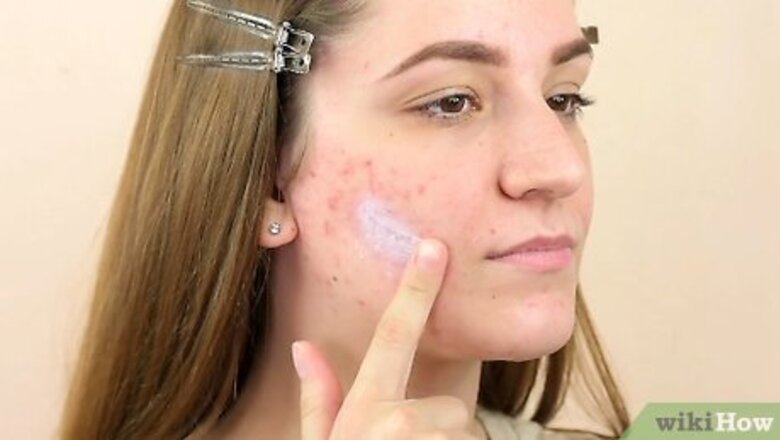
views
Using Powder, Concealer, and Foundation
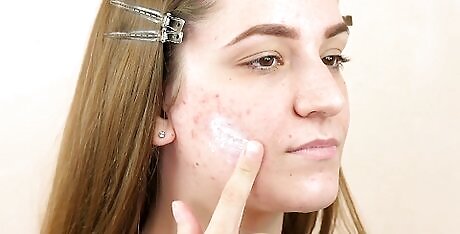
Rub a face primer over the area. Choose a moisturizing face primer that will add some hydration to the area. Pat a pea-sized amount over your broken skin and let it soak in for about 5 minutes. Face primer helps to close your pores and make your skin a smooth canvas for your makeup.
Dab liquid concealer over the broken skin to cover the redness. Dip a clean makeup brush into some liquid concealer and gently pat it on top of the broken skin. Focus on the edges and the center of the broken skin to cover up the redness. Use a clean makeup brush to avoid introducing bacteria to your broken skin. Try to avoid using a stick concealer so you don’t have to rub the area too much.
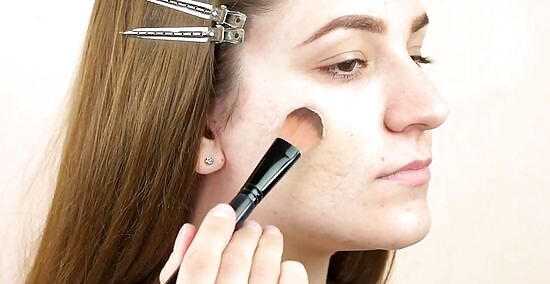
Pat on a liquid foundation. Dab a pea-sized amount of a flawless finish foundation over the area of your broken skin and use a blending sponge or brush to pat it onto your face. A flawless finish foundation will help to close your pores and create a smooth, flat surface on your skin. Try to avoid using powder foundation, as this can dry out your skin and draw attention to the popped pimple.
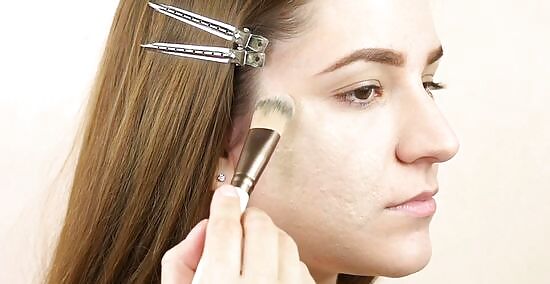
Add another layer of concealer for extra coverage. Use a clean makeup brush to pick up some concealer and add it to any red areas of your broken skin. Pat it on gently so you don’t accidentally take off any of the makeup you just put down. Always use a clean makeup brush for every step to avoid a potential infection.
Pack a translucent powder on top of the broken skin. Dip a stiff makeup brush or sponge into some translucent powder to pick it up. Pat it onto your broken skin in a thick coating to cover the entire area. Translucent powder is also called finishing powder. It usually goes on top of heavy makeup looks that you don’t want to sweat off during a night out. Wash your makeup brush off before you use it again so you don’t transfer any germs to and from your broken skin. Expert Answer Q How often should I clean my makeup brushes to avoid further irritating my skin? Katya Gudaeva Katya Gudaeva Professional Makeup Artist Katya Gudaeva is a Professional Makeup Artist and the Founder of Bridal Beauty Agency based in Seattle, Washington. She has worked in the beauty industry for over 10 years and worked with companies such as Patagonia, Tommy Bahama, and Barneys New York and with clients such as Amy Schumer, Macklemore, and Train. Katya Gudaeva EXPERT ADVICE Answer from Katya Gudaeva: I would suggest you wash your brushes with brush shampoo at least once a week.
Healing Your Skin Quickly
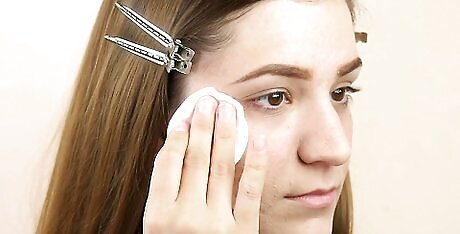
Wash off your makeup as soon as you can. Although covering your broken skin can make it seem like it went away, leaving cosmetics on for too long can actually make the wound worse. Use a gentle face cleanser and warm water to wash off your makeup as soon as you get home so your broken skin can breathe and heal.Tip: Washing your skin twice a day will also help prevent breakouts in the future.
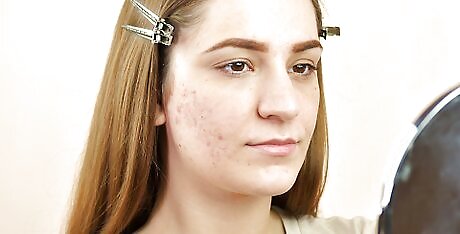
Leave the area alone so it can heal naturally. Try to avoid picking, poking, or peeling your broken skin as it scabs over and heals. The less you mess with it, the faster it will heal. Plus, letting it heal without opening it up again will probably lead to a smaller scar. In general, you should avoid touching your face to prevent acne. The bacteria and oil from your fingertips can clog your pores and create more whiteheads.
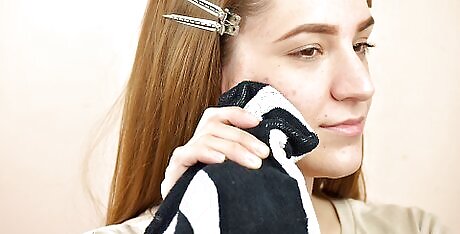
Press ice onto the area to reduce inflammation. Wrap a few ice cubes in a washcloth or towel and press it against the broken skin. Hold it there for 5 to 10 minutes at a time to reduce the swelling and redness in the area. This can also help reduce any pain that your popped pimple is causing.
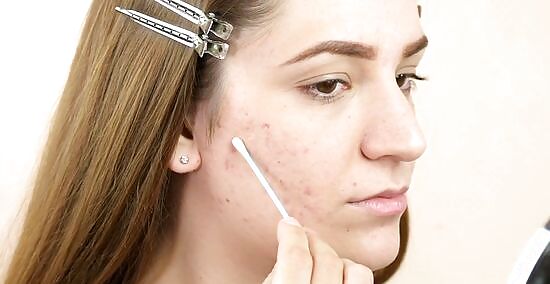
Add a spot treatment overnight to help prevent infection. Dab a pea-sized amount of acne spot treatment onto the area with the broken skin before you go to bed. Let it soak in for about 5 minutes before you lay down so it doesn’t rub off on your pillow. You can also use an acne spot treatment on pimples before you pop them to prevent them from getting larger or more painful.
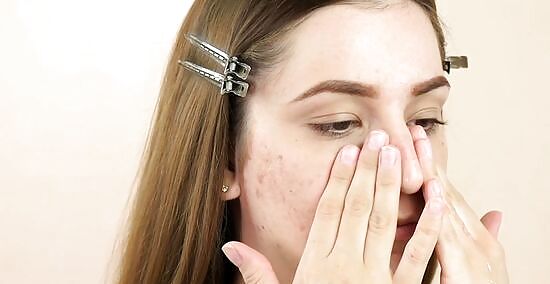
Apply a moisturizer to your skin to keep it hydrated. Apply a fragrance and dye-free face lotion to your skin twice a day every day. This will help your skin heal faster and stay hydrated to prevent greasy and flaky skin. If you have oily skin, adding moisturizer can seem counterintuitive. However, your face is probably producing oil because your skin feels dry. Adding moisture can help to balance out your skin so it stops producing so much oil.

















Comments
0 comment